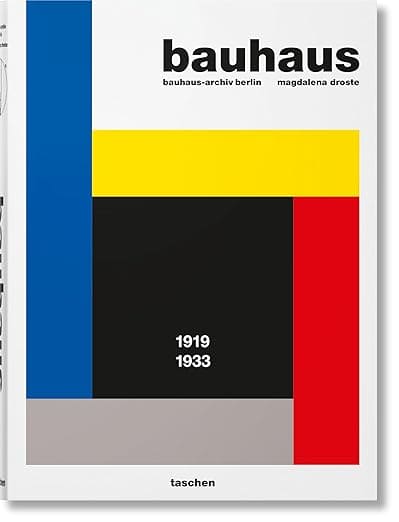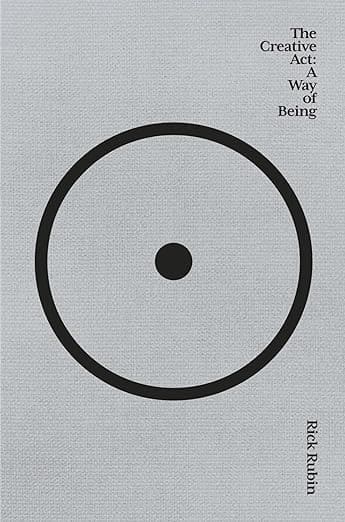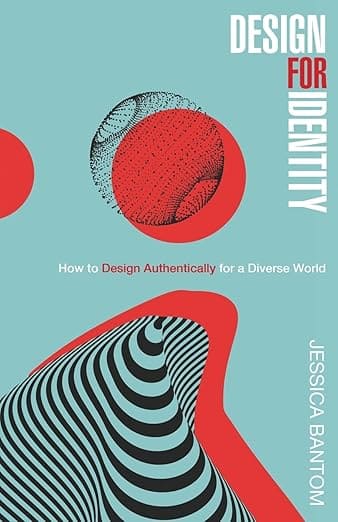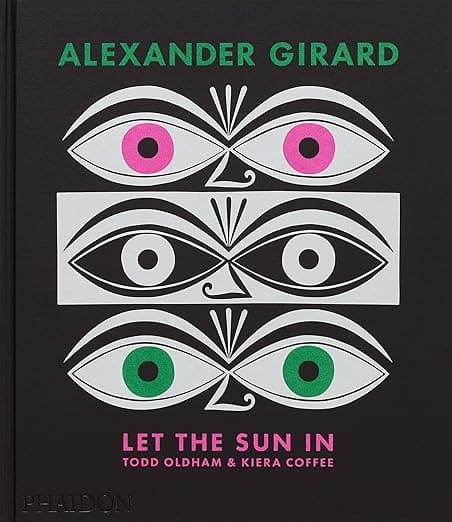They say you can’t judge a book by its cover, but many people do nonetheless — which makes it all the more crucial for authors to choose their book cover designs carefully.
The best (and best-selling) book cover designs are those that clearly and compellingly convey the book’s premise… which is why a single, striking image is often part of a successful cover design.
In this sense, designing a book cover is not unlike designing a great logo. The design must be clear without being heavy-handed; digestible without seeming overly simple; and should ultimately pull in the target audience for whatever the author or company is offering.
Table of Contents
5 Book Cover Designs Focusing on Various Elements of Design
To give you some ideas for 2025, here are five books with clever “logo-like” cover designs — and, as a bonus, the books themselves are also focused on various elements of design.
1. Jean Jullien by Jean Jullien

Starting off strong with the cover of Jean Jullien’s self-titled monograph, this design instantly calls to mind a whimsical cartoon character. Indeed, for those who have children (or who have studied children’s character design), it may be reminiscent of the long-nosed Elephant from Mo Willems’ Elephant and Piggie series, or perhaps of a googly-eyed Muppet (Animal or Beaker, most likely).
But the superficial simplicity of this book cover belies its contents; it’s chock full of Jullien’s labor-intensive work from over the years. The book includes not just his digital drawings, but also photos of his three-dimensional designs, most of it rendered either as fun furniture or innovative installations.
What’s perhaps unusual about this cover is the fact that — as Jullien’s artwork goes — it’s one of his most basic pieces, rather than a showcase of his most elaborate and “impressive” work. Yet at the same time, one could argue it accomplishes exactly what a good logo should: it grabs the audience with a “no-frills” representation of the contents within, intriguing them without overwhelming them, ensuring they’ll want to know more.
2. Bauhaus by Magdalena Droste

Many designers will be familiar with “Bauhaus” graphic design: a style involving bright colors, geometric shapes, and clean lines, and which is venerated in corporate design for its implied functionality and “neatness.”
Naturally, the cover of this book — about the German art school which gave rise to this style — employs a classic Bauhaus aesthetic of primary-colored rectangles surrounding a black square.
While Rothko might be the designer who immediately jumps to mind, this cover actually draws on the works of Walter Gropius and Piet Mondrian; these shapes and colors are ubiquitous in their art, particularly Mondrian’s (not a Bauhaus student himself, but certainly a key influence).
Similar to the Jean Jullien cover, this design works because it manages to do a lot with very little. Anyone acquainted with Bauhaus will see how its principles manifest on this cover, and those who aren’t will get a sense of those principles right away. Savvy designers will also recognize the power of primary colors in a central image — just look at the logos for brands like Burger King, Pepsi, and Lego to see how well this can work.
To be sure, this is another cover design where the thesis is “simple yet effective”… something the Bauhausians championed as well.
3. The Creative Act: A Way of Being by Rick Rubin

Unlike the other books on this list, The Creative Act has little to do with graphic design or even three-dimensional design. That said, it remains a vital read for anyone looking to do creative work, especially if they want to make a lifestyle out of it.
For our purposes, the cover of The Creative Act is perhaps the most logo-like of all these book cover designs. In fact, it’s not dissimilar from other logos based on concentric circles or dots
— think Target, Google Chrome, Tide, etc. — though in this case (and somewhat unexpectedly given the title), the circle contains no color. Its bare-bones simplicity might puzzle some viewers; how is this emblematic of “the creative act”?
But with a bit of context, and a closer look, the design transforms into something new. Those who know Rick Rubin as a legendary music producer will recognize this circle-and-dot design as none other than a vinyl record: a concise visual
summary of his work in a minimalist, almost modest way.
Once again, this cover achieves precisely what a logo should — it tells a clear story and lets the target audience know that this book is “for them”, without being overstimulating or overbearing. (That said, a bit of added texture on The Creative Act’s cover does help it feel a bit more complex in-person — a technique also used on the Jean Jullien cover.)
4. Design for Identity by Jessica Bantom

Design for Identity is an interesting case, as book covers go. While no one could call it overly busy, the cover does involve multiple shapes and patterns that are not obviously connected to one another. However, looking at the subtitle of this specific book — “How to Design Authentically for a Diverse World” — sheds light on what’s happening aesthetically; this design incorporates so many different elements because it means to embrace a variety of experiences and identities, rather than one single vision.
Of course, as we’ve touched on, simplicity is the name of the game in logo design. In that context, let’s examine the top vs. bottom elements separately, as if each were its own design. The top bit looks familiar, making us think of other logos with overlapping circles (MasterCard, Letterboxd, the Olympic rings), as well as more “organic” elements like the phases of the moon — an association bolstered by the red crescent on
the right. However, the lower section is arguably more dynamic, if also less suitable as a logo. It looks like it belongs on a book cover, rather than on a business card — perhaps as a fanciful patterned landscape in a book by Dr. Seuss, or even on the cover of a sci-fi novel.
The contrast between these elements — organic vs. dynamic, logo-esque vs. landscape-esque
— is what makes this cover so effective for the book’s subject. True, the overall design might not work as a logo, but that’s okay; sometimes, an effective book cover may include just one logo-like feature, without it consuming all the available space.
5. Alexander Girard: Let the Sun In by Todd Oldham and Kiera Coffee

To bring things full circle, we’ll end on another artistic monograph — this one for Alexander Girard, a 20th century designer who worked mainly in 3-D. Girard was an esteemed textile artist, furniture and interior designer, and architect… but he also dabbled in “small-scale” design, as evidenced by the array of eye-catching images in this book.
It’s certainly intriguing that the authors and publisher chose these images to represent Girard’s life and work, given that he did not produce many logos — but it speaks to their profound knowledge and understanding of what works on a book cover.
As with the cover of Design for Identity, there’s some great contrast here, with each of the eyes’ irises being a different color and the middle pair of eyes having darkened “whites”, along with a nose that points in a different direction than the others.
Yet at the same time, there’s no doubt that these images “cohere”; the same shapes and proportions comprise each set of eyes, which are also balanced by the surrounding title text, matching the oddly colored irises of pink and green. So unlike with Design for Identity, any of these images could serve as its own logo — or variations on the same logo for, say, an optometrist’s office or a psychic medium.
What’s cool about logos and book cover design is — though they do tend to offer clear messaging and/or a strong narrative — they’re also open to interpretation. Sometimes you won’t discover all the layers of a design until you’ve actually experienced the story, product, or service that it represents. With that in mind — even as you consider the commercial lessons of these logo-like cover designs — remember that there are no hard-and-fast rules when it comes to design.
True, you can study the pros all you want, but your own creative instincts must ultimately guide you. On that note, enjoy these books with a grain of salt — and best of luck on your own design projects for 2025.
Join The Logo Community
We hope these 5 Books With Clever “Logo-Like” Book Cover Designs is helpful. If you would like more personal tips, advice, insights, and access to our community threads and other goodies, join us in our community.
You can comment directly on posts, access our community threads, have a discussion and ask questions with our founder Andrew.
If you’re looking to learn more about brand strategy, we highly recommend eRESONAID with our friend and acclaimed brand strategist and author Fabian Geyrhalter, it’s packed full of knowledge and insights you will need to learn to become a brand strategist or apply what you learn within your own business.

Author Bio
Savannah Cordova is a writer with Reedsy, a marketplace that connects self-publishing authors with the world’s best editors, designers, and marketers. In her spare time, Savannah enjoys reading literary fiction and browsing the bookstore for interesting covers. She’s fascinated by contemporary design and is always trying to predict which trends will come next.

